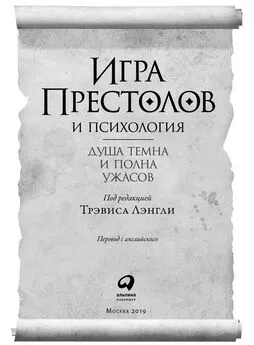Трэвис Лэнгли - «Игра престолов» и психология
- Название:«Игра престолов» и психология
- Автор:
- Жанр:
- Издательство:Литагент Альпина
- Год:2019
- Город:Москва
- ISBN:978-5-9614-2410-2
- Рейтинг:
- Избранное:Добавить в избранное
-
Отзывы:
-
Ваша оценка:
Трэвис Лэнгли - «Игра престолов» и психология краткое содержание
«Игра престолов» и психология - читать онлайн бесплатно ознакомительный отрывок
Интервал:
Закладка:
Easterbrook, M. A., Kisilevsky, B. S., Muir, D. W., & Laplante, D. P. (1999). Newborns discriminate schematic faces from scrambled faces. Canadian Journal of Experimental Psychology , 53 (3), 231–241.
388
Маслоу А. Новые рубежи человеческой природы. – М.: Альпина нон-фикшн, 2011.
389
McClelland, D. C. (1985). Human motivation. San Francisco, CA: Scott, Foresman.
390
Monzani, L., Ripoll, P., & Reiró, J. M. (2014). Followers' agreeableness and extraversion and their loyalty towards authentic leadership. Psichothema , 26 (1), 69–75.
391
Judge, T. A., & Bono, J. E. (2000). Five-factor model of personality and transformational leadership. Journal of Applied Psychology , 85 (5), 751–765;
392
McAdams, D. P. (1980). A thematic coding system for the intimacy motive. Journal of Research in Personality , 14 (4), 413–432.
393
Эпизод 2-7 «Человек без чести» (13 мая 2012 г.).
394
Хорни К. Невротическая личность нашего времени. – М.: Академический проект, 2009;
Sayers, J. (1991). Mothers of psychoanalysis: Helen Deutsch, Karen Horney, Anna Freud, Melanie Klein. New York, NY: Norton.
395
Фрейд З. Основные принципы психоанализа [сборник работ]. – М.; Киев: Рефл-бук, Ваклер, 1998.
396
Rhodes, G. K., Stanley, S. M., & Markman, H. J. (2010). Should I stay or should I go? Predicting dating relationship stability from four aspects of commitment. Journal of Family Psychology , 24 (5), 543–550;
397
Sternberg, R. (1986). A triangular theory of love. Psychological Review , 93 (2), 119–135.
Sternberg, R. (1997). Construct validation of a triangular love scale. European Journal of Social Psychology , 27 (3), 313–335.
398
Acevedo, B. P., & Aron, A. (2009). Does long-term relationship kill romantic love? Review of General Psychology , 13 (1), 59–65; Kim, J., & Hatfield, E. (2004). Love types and subjective well-being: A cross-cultural study. Social Behavior and Personality , 32 (2), 173–182; Sternberg, R. (1988). The triangle of love: Intimacy, passion, commitment. New York, NY: Basic.
399
Мартин Дж. Танец с драконами. – М.: АСТ, 2013.
400
Франкл В. Человек в поисках смысла. – М.: Прогресс, 1990.
401
Hobfoll, S. E., Hall, B. J., Canetti-Nisim, D., Galea, S., Johnson, R. J., & Palmieri, P. A. (2007). Refining our understanding of traumatic growth in the face of terrorism: Moving from meaning cognitions to doing what is meaningful. Applied Psychology , 56 (3), 345–366.
402
Rajandram, R. K., Jenewein, J., McGrath, C., & Zwahlen, R. A. (2011). Coping processes relevant to posttraumatic growth: An evidence-based review. Supportive Care in Cancer , 19 (5), 583–589.
403
Woodward, C., & Joseph, S. (2003). Positive change processes and post-traumatic growth in people who have experienced childhood abuse: Understanding vehicles of change. Psychology and Psychotherapy , 76 (3), 267–283.
404
Эпизод 3-10 «Мать» (9 июня 2013 г.).
405
Эпизод 1-1 «Зима близко» (17 апреля 2011 г.).
406
Dekel, S., Mandl, C., & Solomon, Z. (2011). Shared and unique predictors of post-traumatic growth and distress. Journal of Clinical Psychology , 67 (3), 241–252.
407
Barrington, A. J., & Shakespeare-Finch, J. (2012). Working with refugee survivors of torture and trauma: An opportunity for vicarious post-traumatic growth. Counselling Psychology Quarterly , 26 (1), 89–105.
408
McElheran, M., Briscoe-Smith, A., Khaylis, A., Westrup, D., Hayward, C., & GoreFelton, C. (2012). A conceptual model of post-traumatic growth among children and adolescents in the aftermath of sexual abuse. Counselling Psychology Quarterly , 25 (1), 73–82.
409
Там же.
410
Lichtenthal, W. G., Currier, J. M., Neimeyer, R. A., & Keesee, N. J. (2010). Sense and significance: A mixed methods examination of meaning making after the loss of one's child. Journal of Clinical Psychology , 66 (7), 791–812.
411
Эпизод 2-10 «Валар Моргулис» (3 июня 2012 г.).
412
Rajandram, R. K., Jenewein, J., McGrath, C., & Zwahlen, R. A. (2011). Coping processes relevant to posttraumatic growth: An evidence-based review. Supportive Care in Cancer , 19 (5), 583–589.
413
Lichtenthal, W. G., Currier, J. M., Neimeyer, R. A., & Keesee, N. J. (2010). Sense and significance: A mixed methods examination of meaning making after the loss of one's child. Journal of Clinical Psychology , 66 (7), 791–812.
414
Joseph, S., Murphy, D., & Regel, S. (2012). An affective-cognitive processing model of post-traumatic growth. Clinical Psychology and Psychotherapy , 19 (4), 316–325.
415
Эпизод 1-9 «Бейелор» (12 июня 2011 г.).
416
Joseph, S., Murphy, D., & Regel, S. (2012). An affective-cognitive processing model of post-traumatic growth. Clinical Psychology and Psychotherapy , 19 (4), 316–325.
417
Эпизод 1-4 «Калеки, бастарды и сломанные вещи» (8 мая 2011 г.).
418
Lichtenthal, W. G., Currier, J. M., Neimeyer, R. A., & Keesee, N. J. (2010). Sense and significance: A mixed methods examination of meaning making after the loss of one's child. Journal of Clinical Psychology , 66 (7), 791–812.
419
Woodward, C., & Joseph, S. (2003). Positive change processes and post-traumatic growth in people who have experienced childhood abuse: Understanding vehicles of change. Psychology and Psychotherapy , 76 (3), 267–283.
420
Dekel, S., Mandl, C., & Solomon, Z. (2011). Shared and unique predictors of post-traumatic growth and distress. Journal of Clinical Psychology , 67 (3), 241–252.
421
Shakespeare-Finch, J., & Barrington, A. (2012). Behavioural changes add validity to the construct of posttraumatic growth. Journal of Traumatic Stress , 25 (2), 433–439.
422
Hobfoll, S. E., Hall, B. J., Canetti-Nisim, D., Galea, S., Johnson, R. J., & Palmieri, P. A. (2007). Refining our understanding of traumatic growth in the face of terrorism: Moving from meaning cognitions to doing what is meaningful. Applied Psychology , 56 (3), 345–366.
423
Barrington, A. J., & Shakespeare-Finch, J. (2012). Working with refugee survivors of torture and trauma: An opportunity for vicarious post-traumatic growth. Counselling Psychology Quarterly , 26 (1), 89–105.
424
Sherrer, H. (Interviewer), & Zimbardo, P. (Interviewee). (2003). Professor Philip Zimbardo: The interview [interview transcript]: http://forejustice.org/zimbardo/p_zimbardo_interview.htm.
425
Glaser, D. (2000). Child abuse and neglect and the brain – a review. Journal of Child Psychology and Psychiatry , 41 (1), 97–116.
426
Park, C. L., & Ai, A. L. (2006). Meaning making and growth: New directions for research on survivors of trauma. Journal of Loss and Trauma , 11 (5), 389–407.
427
Franco, Z. E., Blau, K., & Zimbardo, P. G. (2011). Heroism: A conceptual analysis and differentiation between heroic action and altruism. Review of General Psychology , 15 (2), 99.
428
Мартин Дж. Игра престолов. – М.: АСТ, 1999.
429
American Psychiatric Association (2013). Diagnostic and statistical manual of mental disorders (DSM-5) (5th ed.). Washington, DC: American Psychiatric Association.
430
Там же.
431
Olatunji, B. O., Cisler, J. M., & Deacon, B. J. (2010). Efficacy of cognitive behavioral therapy for anxiety disorders: A review of meta-analytic findings. Psychiatric Clinics of North America , 33 (3), 557–577.
432
Olatunji, B. O., Cisler, J. M., & Deacon, B. J. (2010). Efficacy of cognitive behavioral therapy for anxiety disorders: A review of meta-analytic findings. Psychiatric Clinics of North America , 33 (3), 557–577;
433
Thorpe, S. J., & Salkovskis, P. M. (1995). Phobic beliefs: Do cognitive factors play a role in specific phobias? Behaviour Research and Therapy , 33 (7), 805–816.
434
Мартин Дж. Буря мечей. – М.: АСТ, 2003.
435
Smokowski, P. R., & Kopasz, K. H. (2005). Bullying in school: An overview of types, effects, family characteristics, and intervention strategies. Children and Schools , 27 (2), 101–110.
436
Glaser, D. (2000). Child abuse and neglect and the brain – a review. Journal of Child Psychology and Psychiatry , 41 (1), 97–116.
437
Craig, W. M. (1998). The relationship among bullying, victimization, depression, anxiety, and aggression in elementary school children. Personality and Individual Differences , 24 (1), 123–130;
438
Smokowski, P. R., & Kopasz, K. H. (2005). Bullying in school: An overview of types, effects, family characteristics, and intervention strategies. Children and Schools , 27 (2), 101–110.
439
Там же.
440
Мартин Дж. Пир стервятников. – М.: АСТ, 2008.
441
Мартин Дж. Игра престолов. – М.: АСТ, 1999.
442
Kaplan, S. J., Pelcovitz, D., & Labruna, V. (1999). Child and adolescent abuse and neglect research: A review of the past 10 years. Part I: Physical and emotional abuse and neglect. Journal of the American Academy of Child and Adolescent Psychiatry , 38 (10), 1214–1222.
443
Lew, H. L., Vanderploeg, R. D., Moore, D. F., et al. (2008). Overlap of mild TBI and mental health conditions in returning OIF/OEF service members and veterans. Journal of Rehabilitation Research & Development , 45(3), xi;
Langlois, J. A., Rutland-Brown, W., & Wald, M. M. (2006). The epidemiology and impact of traumatic brain injury: A brief overview. Journal of Head Trauma Rehabilitation , 21 (5), 375–378.
Читать дальшеИнтервал:
Закладка:
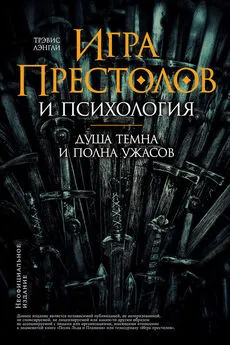

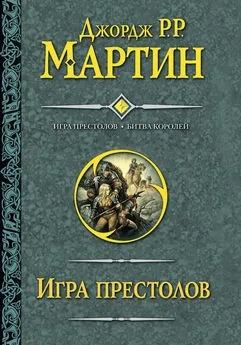

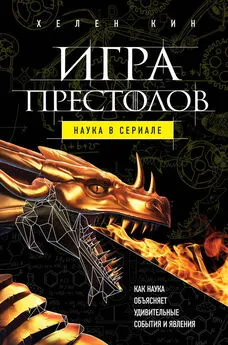
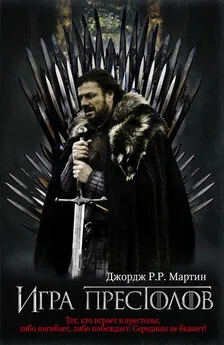
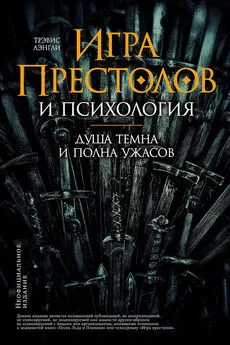


![Андрей Фурсов - Мир «Игры престолов» — это мир подлости, разврата и жестоких пыток [«Игра престолов» как проект будущего]](/books/1082346/andrej-fursov-mir-igry-prestolov-eto-mir-podlo.webp)
